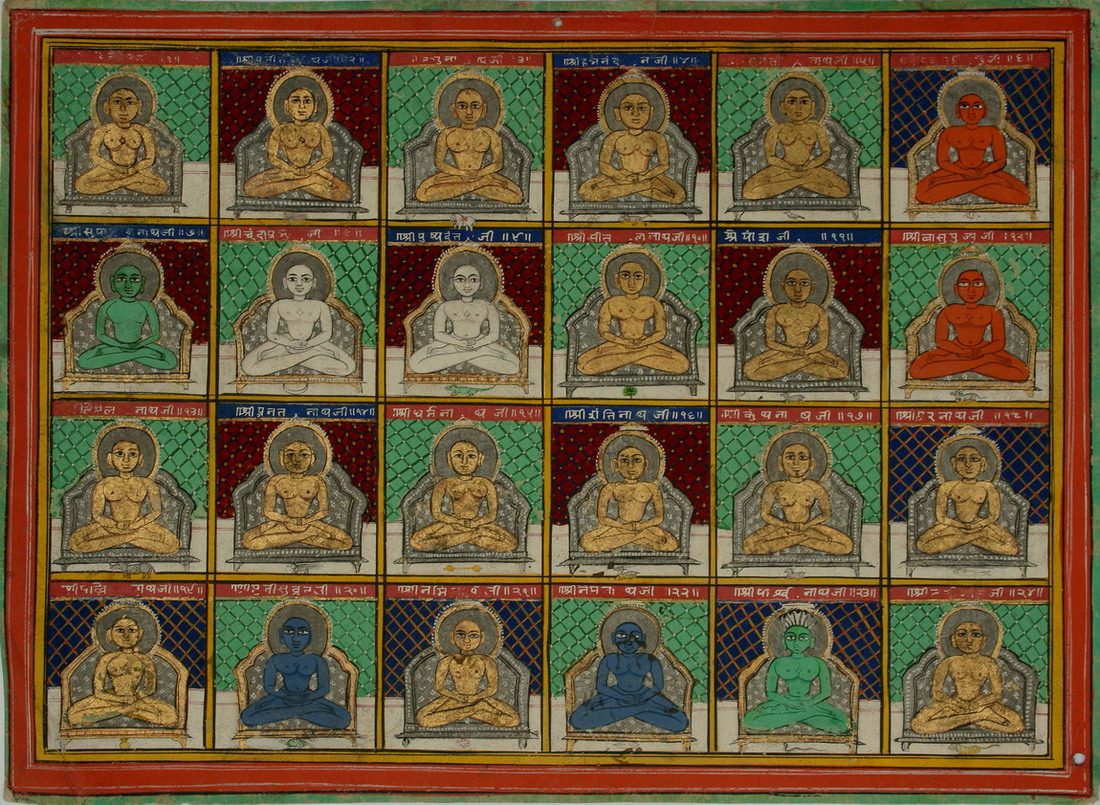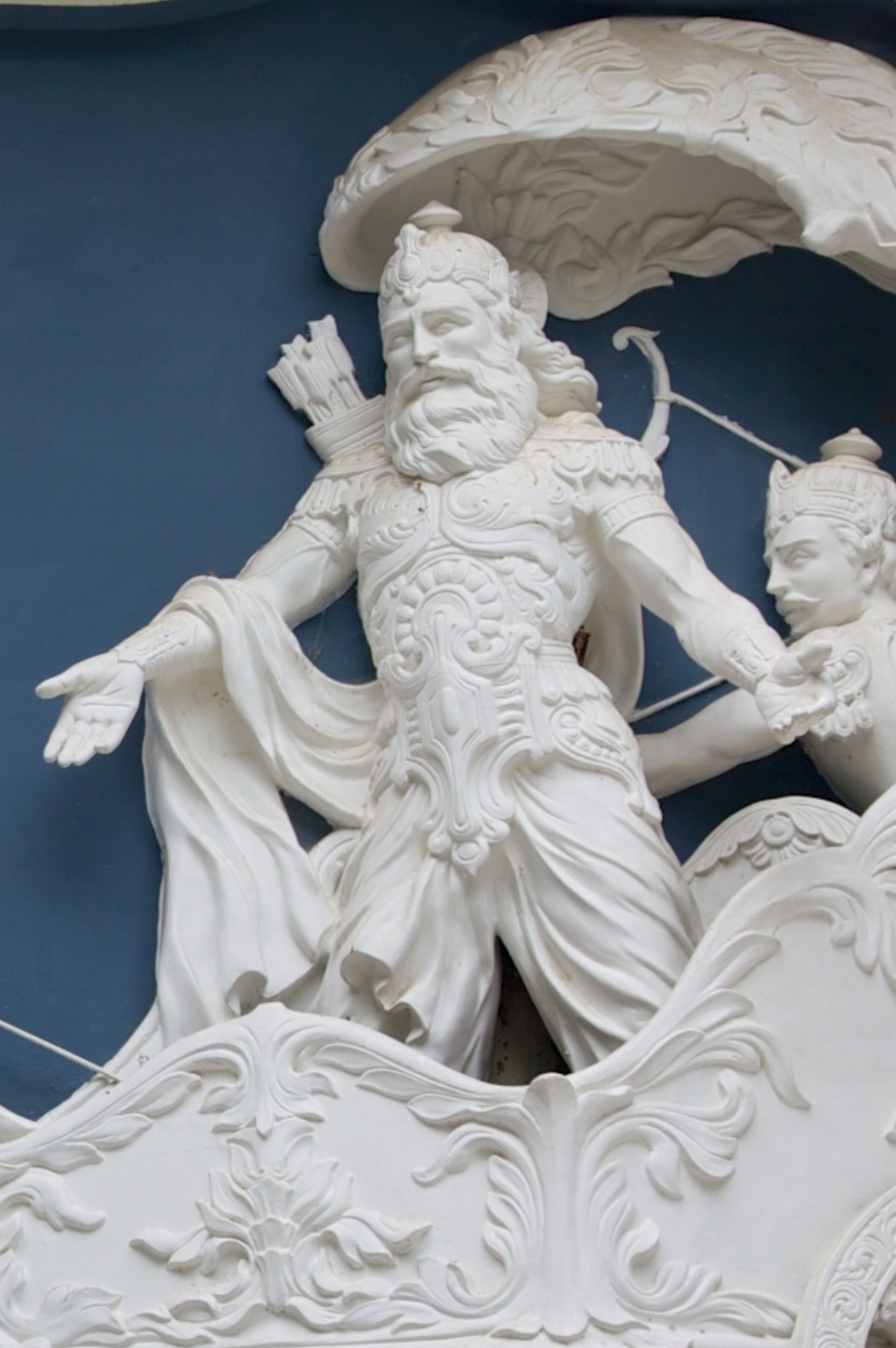|
Triśalā
Trishala, also known as Videhadatta, Priyakarini, or Trishala Mata (Mother ''Trishala''), was the mother of Mahavira, the 24th Tirthankara of Jainism, and wife of the Gaṇa Mukhya, Siddhartha of Kundagrama, of present-day Bihar. She finds mention in the Jain texts. Life Trishala was born as a princess of the Licchavi Republic. The Jain text Uttarapurāṇa details the life of all Tirthankaras and other Salakapurusa. It is mentioned in the text that Consul Chetaka of Vaishali had ten brothers and seven sisters. His sister Priyakarini (Trishala) was married to Siddartha. As per Shvetambara texts and Indologist Hermann Jacobi, Vardhamana Mahavira's mother Trishala was sister of Consul Chetaka. His third wife, ''Kshema'', was a daughter of the chief of the Madra tribe of Punjab. Trishala had seven sisters, one of whom was initiated into the Jain monastic order while the other six married famous kings, including Bimbisara of Magadha. She and her husband Siddhartha were follower ... [...More Info...] [...Related Items...] OR: [Wikipedia] [Google] [Baidu] |
Tirthankara
In Jainism, a ''Tirthankara'' (; ) is a saviour and supreme preacher of the ''Dharma (Jainism), dharma'' (righteous path). The word ''tirthankara'' signifies the founder of a ''Tirtha (Jainism), tirtha'', a fordable passage across ''Saṃsāra (Jainism), saṃsāra'', the sea of interminable birth and death. According to Jains, ''tirthankaras'' are the supreme preachers of ''dharma'', who have conquered ''saṃsāra'' on their own and made a path for others to follow. After understanding the true nature of the self or soul, the ''Tīrthaṅkara'' attains ''kevala jnana'' (omniscience). A Tirthankara provides a bridge for others to follow them from ''saṃsāra'' to ''moksha'' (liberation). In Jain cosmology, the wheel of time is divided into two halves, Utsarpiṇī', the ascending time cycle, and ''avasarpiṇī'', the descending time cycle (said to be current now). In each half of the cycle, exactly 24 ''tirthankaras'' grace this part of the universe. There have been infini ... [...More Info...] [...Related Items...] OR: [Wikipedia] [Google] [Baidu] |
Bhartiya Jnanpith
Bharatiya Jnanpith a literary and research organization, based in New Delhi, India, was founded on February 18, 1944Encyclopaedia of Indian literature vol. 1, p. 298 1987, Sahitya Akademi, by Sahu Shanti Prasad Jain of the Sahu Jain family and his wife Rama Jain to undertake systematic research and publication of Sanskrit, Prakrit, Pali and Apabhramsha texts and covering subjects like religion, philosophy, logic, ethics, grammar, astrology, poetics, etc.jnanpith.net , Bhartiya Jnanpith Official website Its research and publication programme started with the publication of the Dhavala texts. A Jain temple at |
Kshatriya
Kshatriya () (from Sanskrit ''kṣatra'', "rule, authority"; also called Rajanya) is one of the four varnas (social orders) of Hindu society and is associated with the warrior aristocracy. The Sanskrit term ''kṣatriyaḥ'' is used in the context of later Vedic society wherein members were organised into four classes: ''brahmin'', kshatriya, '' vaishya,'' and '' shudra''. History Early Rigvedic tribal monarchy The administrative machinery in Vedic India was headed by a tribal king called a Rajan whose position may or may not have been hereditary. The king may have been elected in a tribal assembly (called a Samiti), which included women. The Rajan protected the tribe and cattle; was assisted by a priest; and did not maintain a standing army, though in the later period the rulership appears to have risen as a social class. The concept of the fourfold varna system is not yet recorded. Later Vedic period The hymn '' Purusha Sukta'' in the ''Rigveda'' describes the symbolic crea ... [...More Info...] [...Related Items...] OR: [Wikipedia] [Google] [Baidu] |
Indra
Indra (; ) is the Hindu god of weather, considered the king of the Deva (Hinduism), Devas and Svarga in Hinduism. He is associated with the sky, lightning, weather, thunder, storms, rains, river flows, and war. [3 volumes] Indra is the most frequently mentioned deity in the ''Rigveda''. He is celebrated for his powers based on his status as a god of order, and as the one who killed the great evil, an Asura (Hinduism), asura named Vritra, who obstructed human prosperity and happiness. Indra destroys Vritra and his "deceiving forces", and thereby brings rain and sunshine as the saviour of mankind. Indra's significance diminishes in the post-Vedic Indian literature, but he still plays an important role in various mythological events. He is depicted as a powerful hero. According to the ''Vishnu Purana'', Indra is the title borne by the king of the gods, which changes every Manvantara – a cyclic period of time in Hindu cosmology. Each Manvantara has its own Indra and the In ... [...More Info...] [...Related Items...] OR: [Wikipedia] [Google] [Baidu] |
Brahmin
Brahmin (; ) is a ''Varna (Hinduism), varna'' (theoretical social classes) within Hindu society. The other three varnas are the ''Kshatriya'' (rulers and warriors), ''Vaishya'' (traders, merchants, and farmers), and ''Shudra'' (labourers). The traditional occupation of Brahmins is that of priesthood (purohit, pandit, or pujari) at Hindu temples or at socio-religious ceremonies, and the performing of rite of passage rituals, such as solemnising a wedding with hymns and prayers.James Lochtefeld (2002), Brahmin, The Illustrated Encyclopedia of Hinduism, Vol. 1: A–M, Rosen Publishing, , page 125 Traditionally, Brahmins are accorded the supreme ritual status of the four social classes, and they also served as spiritual teachers (guru or acharya). In practice, Indian texts suggest that some Brahmins historically also became agriculturalists, warriors, traders, and had also held other occupations in the Indian subcontinent.GS Ghurye (1969), Caste and Race in India, Popular Prakasha ... [...More Info...] [...Related Items...] OR: [Wikipedia] [Google] [Baidu] |
Ācārāṅga Sūtra
The Ācārāṅga Sūtra, the foremost and oldest Jain text (''First book'' c. 5th–4th century BCE; Second book c. Late 4th–2nd century BCE), is the first of the twelve Angas, part of the agamas which were compiled based on the teachings of 24th Tirthankara Mahavira. The existing text of the Ācārāṅga Sūtra which is used by the Śvetāmbara sect of Jainism was recompiled and edited by Acharya Devardhigani Kshamashraman, who headed the council held at Valabhi c. 454 CE. The Digambaras do not recognize the available text, and regard the original text as having been lost in its original form. The Digambara text, '' Mulachara'' is said to be derived from the original Ācārāṅga Sūtra and discusses the conduct of a Digambara monk. Introduction The Ācārāṅga Sūtra is the oldest agama, from a linguistic point of view, written in Ardhamagadhi Prakrit. The Sutra contains two books, or Srutaskandhas. The first book is the older part, to which other treatises were la ... [...More Info...] [...Related Items...] OR: [Wikipedia] [Google] [Baidu] |
Magadha (Mahajanapada)
Magadha was a region and kingdom in ancient India, based in the eastern Ganges Plain. It was one of the sixteen Mahajanapadas during the Second Urbanization period. The region was ruled by several dynasties, which overshadowed, conquered, and incorporated the other Mahajanapadas. Magadha played an important role in the development of Jainism and Buddhism and formed the core of the Maurya Empire (ca. 320–185 BCE). Geography The territory of the Magadha kingdom proper before its expansion was bounded to the north, west, and east respectively by the Gaṅgā, Son, and Campā rivers, and the eastern spurs of the Vindhya mountains formed its southern border. The territory of the initial Magadha kingdom thus corresponded to the modern-day Patna and Gaya districts of the Indian state of Bihar. The region of Greater Magadha also included neighbouring regions in the eastern Gangetic plains and had a distinct culture and belief. History Vedic period (semi-legendary) (ca. 170 ... [...More Info...] [...Related Items...] OR: [Wikipedia] [Google] [Baidu] |
Bimbisara
Bimbisāra (in Buddhist tradition) or Shrenika () and Seniya () in the Jain histories ( or ) was the King of Magadha (V. K. Agnihotri (ed.), ''Indian History''. Allied Publishers, New Delhi 262010p. 166f. or ) and belonged to the Haryanka dynasty.Peter N. Stearns (2001), ''The Encyclopedia of World History''. Houghton Mifflin, p. 76 ff. . He was the son of Bhattiya. His expansion of the kingdom, especially his annexation of the kingdom of Anga to the east, is considered to have laid the foundations for the later expansion of the Mauryan Empire. According to Jain Tradition, he is said to be the first Tirthankara (''will be named as Padmanabha / Mahapadma'') out of 24th Tirthankara of the future cosmic age. He frequently visited Samavasarana of Lord Mahavira seeking answers to his queries. According to Buddhist Tradition, he is also known for his cultural achievements and was a great friend and protector of the Buddha. According to the 7th century Chinese monk Xuanzang, Bim ... [...More Info...] [...Related Items...] OR: [Wikipedia] [Google] [Baidu] |
Jain Monasticism
Jain monasticism refers to the order of monks and nuns in the Jain community and can be divided into two major Religious denomination, denominations: the ''Digambara'' and the ''Śvētāmbara''. The monastic practices of the two major sects vary greatly, but the major principles of both are identical. Five ''mahāvratas'' (Great Vows), from Mahavira's teachings, are followed by all Jain ascetics of both the sects. Historians believe that a united Jain ''Sangha (Jainism), sangha'' (community) existed before 367 BCE, about 160 years after the ''Moksha (Jainism), moksha'' (liberation) of Mahavira. The community then gradually divided into the major denominations. However, no evidences indicate when the schism between the Digambara, Digambaras and the Śvetāmbara, Śvetāmbaras happened. Terminology ''Digambaras'' use the word ' for male monastics and ''aryika'' for female monastics. ''Svetambara monks'' are also called ''nirgrantha'' (without bonds). ''Śvētāmbaras'' also us ... [...More Info...] [...Related Items...] OR: [Wikipedia] [Google] [Baidu] |
Punjab
Punjab (; ; also romanised as Panjāb or Panj-Āb) is a geopolitical, cultural, and historical region in South Asia. It is located in the northwestern part of the Indian subcontinent, comprising areas of modern-day eastern Pakistan and northwestern India. Pakistan's major cities in Punjab are Lahore, Faisalabad, Rawalpindi, Gujranwala, Multan, Sialkot, and Bahawalpur, while India’s are Ludhiana, Amritsar, Chandigarh, Jalandhar, Patiala, Mohali, and Bathinda. Punjab grew out of the settlements along the five rivers, which served as an important route to the Near East as early as the ancient Indus Valley civilization, dating back to , followed by migrations of the Indo-Aryan peoples. Agriculture has been the chief economic feature of the Punjab and formed the foundation of Punjabi culture. The Punjab emerged as an important agricultural region, especially following the Green Revolution during the mid-1960s to the mid-1970s, and has been described as the " breadbask ... [...More Info...] [...Related Items...] OR: [Wikipedia] [Google] [Baidu] |






